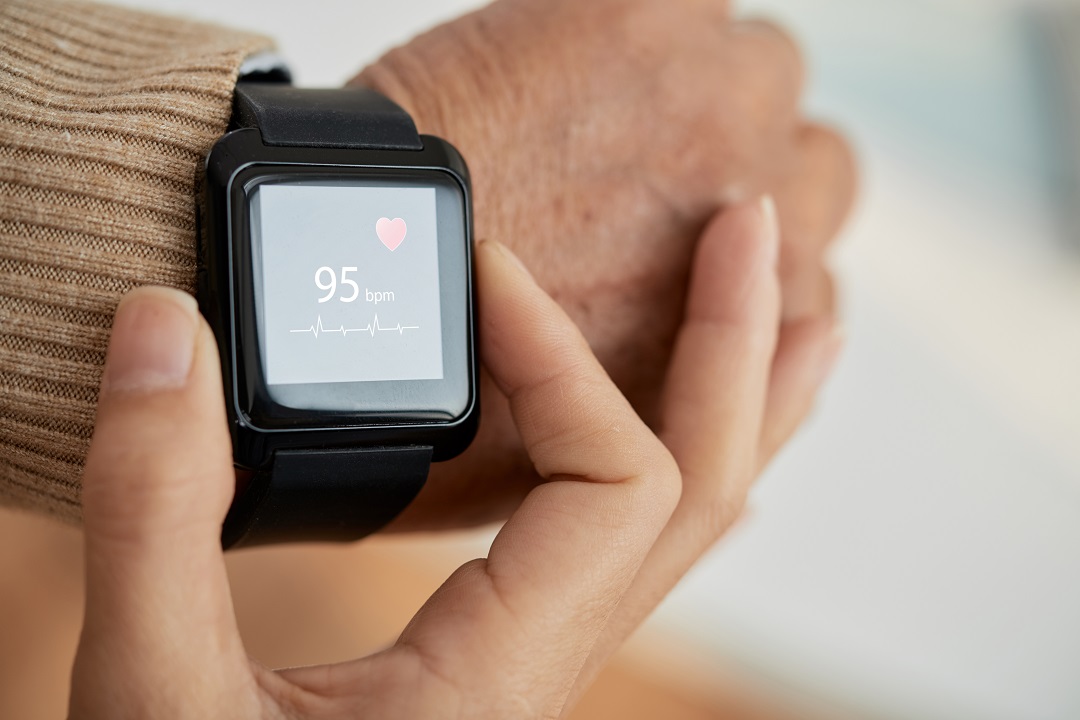The human heart is a powerful muscle that beats around 100,000 times per day. With so much pressure on it, it’s essential to understand how your body responds to everyday life’s stresses!
That’s where the heart rate monitoring system comes in. It measures blood flow instead of volume like old school methods do and eliminates that pesky finger interference! This article will teach you everything you need to know about this technology and why it should be used.
What is an optical heart rate monitor, and how does it work?
Optical heart rate monitors are, by far, the most commonly used heart rate technology. Most fitness trackers use an optical sensor for their accuracy and ease of use. Optical heart rate monitors use a sensor to detect infrared light. It shines a beam of near-infrared light into the skin and measures how much of this light is reflected on it. More or less of this light is reflected as blood pumps around the body, which signals changes in the amount of blood flowing through your veins.
Infrared sensors can be found in technologies including fitness bands, smartwatches, heart rate monitors, chest straps, and some scales that measure body composition/BMI. Optical heart rate monitors are also known as “photoplethysmography” (PPG) sensors/technology as they measure changes in blood flow using photosensitive diodes.
Benefits of using optical heart rate monitoring
1. Accurate method of measuring heart rate
A heart rate monitoring device can provide accurate information on your health and fitness levels. When you exercise, your heart needs to pump more blood and oxygen around the body and deliver it to the muscles that need it. The optical heart rate monitors sensors detect small changes in your skin as the blood vessels expand to allow this extra flow of blood. This makes it an accurate measure of heart rate compared with other methods such as ECG (electrocardiogram) or EKG (electro-skeletal graph).
2. Easy and comfortable use.
When using an optical heart rate monitor, all you have to do is clip a band on, put a watch on your wrist, or stand on a scale – which is usually much easier than wearing a heart rate monitoring chest strap. You can also wear them anywhere on your body, even when you’re wearing clothing that covers the belt.
3. Accurate for all types of exercise
Since the sensors detect changes in blood flow, not an electrical activity, they can be used to track heart rate during any type of activity – whether it’s weight training, cycling, swimming, or jogging. This has led to them being popular with people who use different forms of exercise as the monitor picks up their pulse without needing to have two other products.
4. Many models automatically log sleep times and levels
If you wear your heart rate monitoring watch or band to bed, some models will automatically detect when you are asleep and use this information to track how much time is spent in light, deep, or REM sleep. This can be a great help for people trying to improve their sleep patterns (since lack of sleep can impact significant areas of health).
5. Some monitors give calorie burn estimates
Calorie burn estimates are more valuable than actual heart rate values as they consider many different factors, including the individual’s age, weight, sex, and how intensely they’re exercising.
What to look for in a heart rate monitoring device?
For a truly effective device, you’ll want to make sure your optical heart rate monitor has a high sampling rate. This indicates how many times per second the device can capture information from your pulse. The typical range is anywhere from 20 to 200 beats per second. A higher sampling rate usually means a more accurate reading.
Additionally, when looking at optical heart monitors, users need to understand that they are not medical devices or intended for diagnosis of any conditions like undiagnosed chest pain that could be a symptom of coronary artery disease (CAD) but rather are designed to get you up and to move, track steps taken, and calories burned during your workout.
Remember, you can always use a chest strap if you need more accurate information. But if all you want is a computer that will help motivate you to stay fit and healthy, then an optical heart monitor will do the trick.
When it comes to picking a fitness tracker for a specific activity like running or cardio equipment at home like a treadmill, elliptical machine, or exercise bike, look for one with a heart rate monitor in-built into the device itself rather than purchase another accessory for measurement at the wrist.
The Bottom Line
With the help of a wearable heart monitoring device, you can monitor your heart rate with just one touch. This is an excellent way to see how much exercise is good for your body and whether or not it needs additional attention.
The more we learn about our bodies, the easier it becomes to take care of ourselves in healthy ways that everyone will benefit from! We hope this blog post has given you insight into what optical heart rate monitoring is all about and why it’s such an important tool to use as part of any health routine.
Have you tried monitoring your pulse like this before? Let us know by leaving a comment below!


